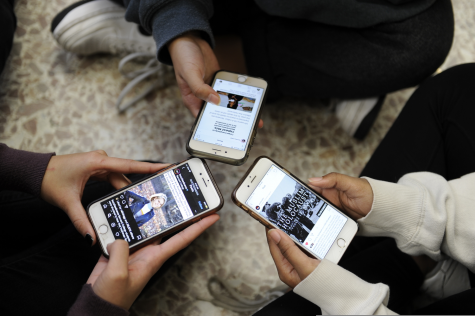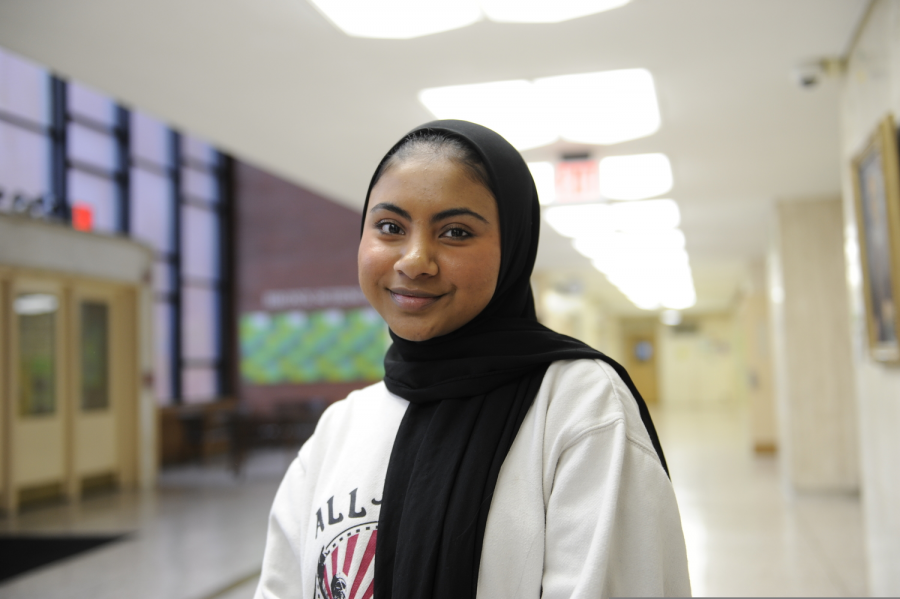Social Media Has Polarized Our World
Adiba Aishi ’21 gets most of her news from various different online platforms and predicts that many others will follow as social media’s presence continues to grow.
Over the course of the last decade, one of the biggest changes has been the rise of the internet and social media. Facebook, founded in 2004, essentially kickstarted the use of online social platforms. Since then, other outlets, such as Instagram and Twitter, have become a source of news and entertainment to many. However, the widespread use of information through these social media platforms was not fully utilized until the 2016 presidential election. This election became an information war with rumors about each candidate being tossed back and forth between various news outlets and social media platforms. As a result, the American public became increasingly divided. The nature of social media exacerbated this divide because online platforms allow anyone to post information without being fact-checked. Fake news had a widespread reach and contributed to the extent in which the country became polarized.
Following the election, social media’s impact has only grown. “I think that at this day and age, being part of Gen-Z, it makes sense that most of us get our news from social media rather than TV or newspapers,” says Adiba Aishi ’21. She believes that social media provides a perspective that other “mainstream news sources” don’t offer. This opinion is shared by many of her peers at Bronx Science. Out of the 108 students that were interviewed in person, 84 students (78%) answered that they obtain the majority of their knowledge about news or current events from social media.
The internet has become a prevalent part of the average American’s life, so much so that their perspectives become shaped by what they read on social media. Mr. Kim, a faculty member of Bronx Science’s English department, has seen that Bronx Science students, in contrast to the general public, tend to not believe what they read online. “Most people know what they read on social media is a sham. Generally, [Bronx Science] students don’t reference what they read on social media in their writing,” said Mr. Kim. However, students’ perspectives are, in some way, molded by the beliefs of those around them. Although students at Bronx Science are perceptive enough not to trust biased news sources, no one is immune to the influence that repeated exposure to bias inflicts.
Social media is designed to reinforce and echo the user’s mindset. “I mostly come across posts that I agree with, probably because that’s how social media is organized,” said Aishi. You see things that you relate to and that’s how your feed is created.” Once someone likes a post on Instagram, the app’s algorithm shows them more posts that are similar to the one that they liked. This creates a false sense of a widely shared viewpoint, further convincing them that the information is true. As a result, people form their perspectives based on false information because they are not exposed to the other sides of the story.
As social media’s presence continues to grow, students and adults need to be mindful of the impact that biased posts have on influencing our perspectives. As the upcoming election approaches, it is more important than ever to look out for posts that are partial to only one side and evaluate sources before taking them into consideration. We, as citizens, have a responsibility to be well-informed, worldly people who make decisions only after looking at the issue from all perspectives.

As students scroll through Instagram, they see posts that echo what they already believe because the platform is designed to only display posts that align with their views.
We, as citizens, have a responsibility to be well-informed, worldly people who make decisions only after looking at the issue from all perspectives.
Ruhika Ponda is a Copy Chief for ‘The Science Survey.' She finds journalism fascinating because it gives her a platform to inform dozens of readers about...
Samama Moontaha is an Editor-in-Chief for ‘The Science Survey.’ She loves writing journalistic stories about the students at Bronx Science, bringing...

